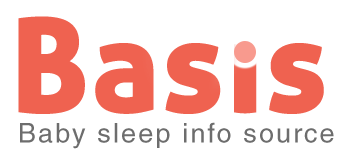Technological devices & Monitors
Technological devices & Monitors
Technological developments now allow parents to monitor everything from respiratory rate to temperature to heart rate to blood oxygenation and more. These devices are increasingly smart and wearable. It is a rapidly expanding market. Devices are aimed at increasing uninterrupted sleep or to reassure parents of their infant’s safety.
However the market for baby monitoring devices is a largely unregulated area (BMJ, 2014). As they are not medically certified, they cannot claim to have medical benefits. If you carefully examine the language used to advertise their products they often allude to putting parents’ minds at rest, which could suggest that they protect babies against SIDS or other health risks. It should be made clear to parents that these devices are consumer products and that there is no published data that confirms they are protective against SIDS (BMJ, 2014).
The distinction often made is that these products offer reassurance to parents, not SIDS prevention. It is important to note that this could lull parents into a false sense of security meaning they are less attentive to their child’s safety and SIDS reduction guidance than they otherwise would be, thereby actually increasing SIDS risk.
What sorts of devices are out there?
There is a huge variety of technology aimed at promoting infant sleep, but there are two broad categories: noise machines (designed to send infants to sleep) and monitors (those that monitor infants in various ways as they sleep).
Noise machines
In the former category are infant sleep machines (ISMs) that produce an ambient sound to disguise background sound in the infant’s sleep environment. Whether or not this works, Hugh et al. (2014) have found that ISMs are capable of reaching sound levels that can damage infant hearing. However responsible use of these machines and following manufacturer guidelines eliminates this risk. Noise machines should not be placed next to an infant’s head, should not be used at high volume, and should not be used continuously or for prolonged periods.
Monitors
Biological monitors can capture a wide range of infant measurements, respiratory rate and heart beat being the most common and come in many forms. Technology is shifting towards wearable monitors, such as socks or baby grows. They are also becoming more advanced, one form even incorporating developments from the European Space Agency!
Studies involving breathing monitors to measure apnoea (an interruption in breathing) or bradycardia (an interruption in the heart beat) find that these are not significantly indicative of SIDS (Ward et al., 1986; AAP, 2003; Hodgman & Hoppenbrouwers, 1987) in healthy term infants. They could be useful for home monitoring of more vulnerable (see below) and/or preterm infants (Ramanathan et al., 2001; AAP, 2003).
Cardiorespiratory monitors can be warranted in circumstances when airway obstructions are more likely, for example if the infant has undergone surgery to respiratory tracts or had previous respiratory problems, but they have not been proven as predictors of SIDS (AAP, 2003)
If parents require or choose to use cardiorespiratory monitors on their infants it is recommended that they first seek advice from a medical professional (AAP, 2003).
Audio or video monitors are familiar to most parents and are generally used to relay signs of apnoea, or infant distress (crying). In these respects it is an effective technology, but again parents should not be lulled into false sense of security. If parents are more inclined to leave their infant alone whilst they have a baby monitor this is a SIDS risk factor, and an audio or video monitor will not prevent SIDS from occurring.
Furthermore the benefits of an infant maintaining close contact with its parents continue, such as bonding and increased breastfeeding. If baby monitors incline parents to stray further from their infants there is a potential danger. However there need to be more investigations into this area.
With all monitors there is the potential for the battery to run out or power source to disconnect, something that parents should take into account when considering using them.
In short, electrical devices used to monitor infant sleep should be used with caution. They are not associated with any demonstrable prevention of SIDS, and they may have an adverse impact upon parents’ sense of their infant’s safety and their care strategy.
